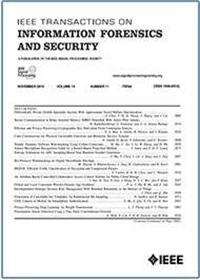Dual Consistency Regularization for Generalized Face Anti-Spoofing
IF 6.3
1区 计算机科学
Q1 COMPUTER SCIENCE, THEORY & METHODS
IEEE Transactions on Information Forensics and Security
Pub Date : 2025-02-10
DOI:10.1109/TIFS.2025.3540659
引用次数: 0
Abstract
Recent Face Anti-Spoofing (FAS) methods have improved generalization to unseen domains by leveraging domain generalization techniques. However, they overlooked the semantic relationships between local features, resulting in suboptimal feature alignment and limited performance. To this end, pixel-wise supervision has been introduced to offer contextual guidance for better feature alignment. Unfortunately, the semantic ambiguity in coarsely designed pixel-wise supervision often leads to misalignment. This paper proposes a novel Dual Consistency Regularization Network (DCRN). It promotes the fine-grained alignment of local features with dense semantic correspondence for FAS. Specifically, a Dual Consistency Learning module (DCL) is devised to capture the inter- and intra-similarity between each region of sample pairs. In this module, a dual consistency regularization learning objective enhances the semantic consistency of local features by minimizing both the variance of inter-similarity and the distance between inter- and intra-similarity. Further, a weight matrix is estimated based on the inter-similarity, representing the possibility that each region belongs to the living class. Based on this weight matrix, WMSE loss is designed to guide the model in avoiding mapping the live regions to the spoofing class, thus alleviating semantic ambiguity in pixel-wise supervision. Extensive experiments on four widely used datasets clearly demonstrate the superiority and high generalization of the proposed DCRN.求助全文
约1分钟内获得全文
求助全文
来源期刊

IEEE Transactions on Information Forensics and Security
工程技术-工程:电子与电气
CiteScore
14.40
自引率
7.40%
发文量
234
审稿时长
6.5 months
期刊介绍:
The IEEE Transactions on Information Forensics and Security covers the sciences, technologies, and applications relating to information forensics, information security, biometrics, surveillance and systems applications that incorporate these features
 求助内容:
求助内容: 应助结果提醒方式:
应助结果提醒方式:


